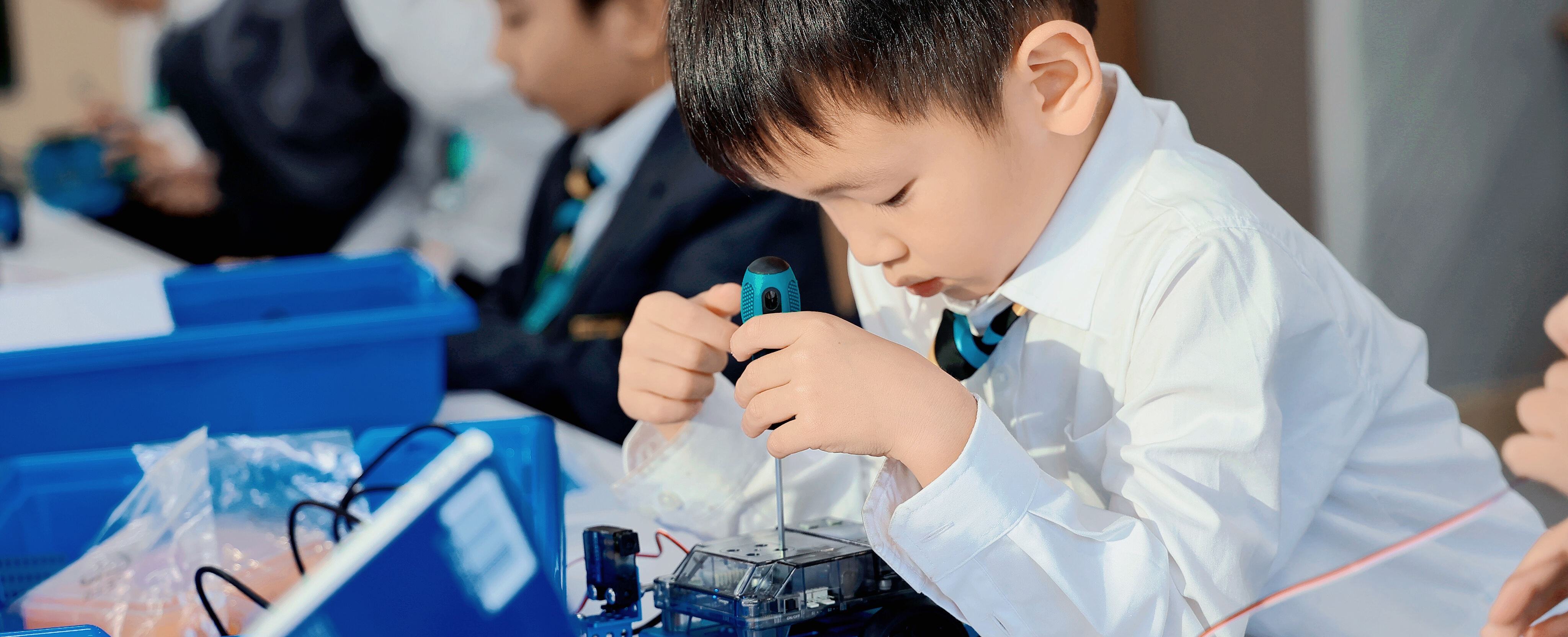
Do you remember the Anger in the Disney movie Inside Out? He has a bad temper and loves to get angry when things don't go his way: he gets angry when he doesn't get the food he wants, he gets angry when he doesn't feel valued, he gets angry when he feels overly lectured… He is an important part of our daily lives, as are many other emotions, but the consequences of failing to deal with such emotions well are often more devastating.
Picture from Disney movie- Inside Out
Psychological health is an important part of pupils' wellbeing at Huili School Nantong. Helping pupils manage their emotions, explore, release, become aware of and share their inner selves is an important part of the school counsellor’s daily work. Just yesterday, pupils shared their experiences in a psychodrama based on the theme of 'anger', called Embracing Vulnerability and Transforming Anger.
Let's start with a talk on the emotion of "anger" presented by Ms Sara Shi, the school counsellor.
施静洁
Sara Shi
心理教师
Counsellor
Anger is the most common negative emotion among children. Children often fail to handle their anger emotions properly due to the lack of development of their logical brain. They are not able to rationally analyse the causes and consequences of events on their own, and can only act impulsively when emotions overwhelm their brains, ultimately causing negative behavioural consequences and harming the interpersonal relationships around them.
The main reasons for children's long-term anger include the following:
01 In a series of escalating behaviours, they can only see one or two fragments that ignite their anger unilaterally, rather than the entire process of the event.
02 Focus only on what others have done wrong, lack reflection on their own behaviour, and ignore their role in contributing to the development of the event.
03 A single way of thinking, with black or white, right or wrong, and a lack of middle area, also means a lack of flexible judgment and problem-solving abilities.
04 During the entire process of anger, children are difficult to find out where they are harmed psychologically, such as wanting to be respected but never being respected, wanting to be understood and trusted, but always being misunderstood and questioned. Because this deep emotional need has not been seen by themselves, it cannot be expressed and result in similar events that continue to occur repeatedly.
05 Lack of good role models to deal with anger around children. Parents either completely erupt or suppress anger in front of their children, and children cannot find reasonable channels and resources to release anger.
Anger often leads to impulsive behaviour. If anger is released outwards, it will be an oral or physical attack on others; if anger is released inwards, it could be the ultimate cause of suicidal and self-harming behaviour. Therefore, in family rearing and school education, it is particularly important to guide children's anger in a positive way.
The first school assembly related to mental wellbeing was based on the theme of anger. A psychodrama called "Embracing Vulnerability and Transforming Anger" presents the causes and development of children's anger with specific plots, as well as methods to transform anger from negative emotions into positive forces. From principals to teachers, to pupils of all levels, shared the events or situations in their lives that are most likely to cause anger, as well as how to handle anger most effectively and quickly.
Although anger is an emotion full of negative experiences, there is also a tremendous power hidden behind it, depending on how we use it. From a psychological perspective, individuals presenting anger is thought to actually to prove their strength. However, behind this false strength, there are often huge vulnerabilities, such as the desire to receive the care and support of others, and the recognition and love of classmates, teachers, and parents. When individuals do not see their own vulnerability, they seek it through anger. However, the more anger they express, the more irrational they are perceived by others, and the more rejected by others, the more anger they feel, it creates a vicious circle.
The prominent key to solving anger is to help a child see the true cause of their anger. In the cause analysis, in addition to helping them correct their paranoid cognitive style, it is also necessary to help them find out what their emotions, needs, expectations, and desires which are not being met, how to embrace their vulnerability, and how to rationally express their vulnerability in a trustworthy interpersonal relationship. When a person's psychological needs are fully met, it is difficult for them to experience anger.
Sometimes we also encounter situations where the interpersonal relationships around us cannot meet our psychological needs. After all, not everyone in this world is born to satisfy others. At this point, we need to teach children to learn to accept, understand and transform anger into a power to improve themselves, and transform this negative emotion into a driving force in life through ways to make themselves stronger and happier, or to make the world a better place.